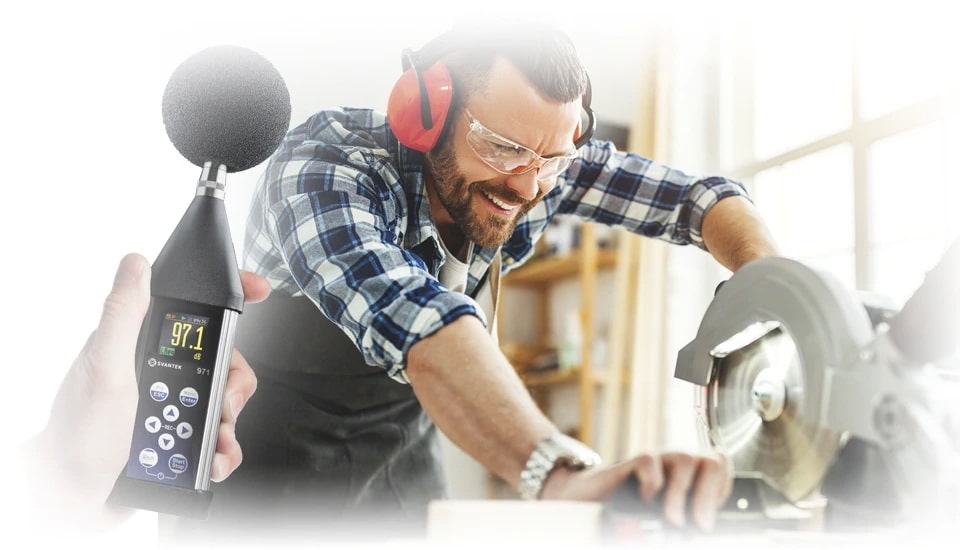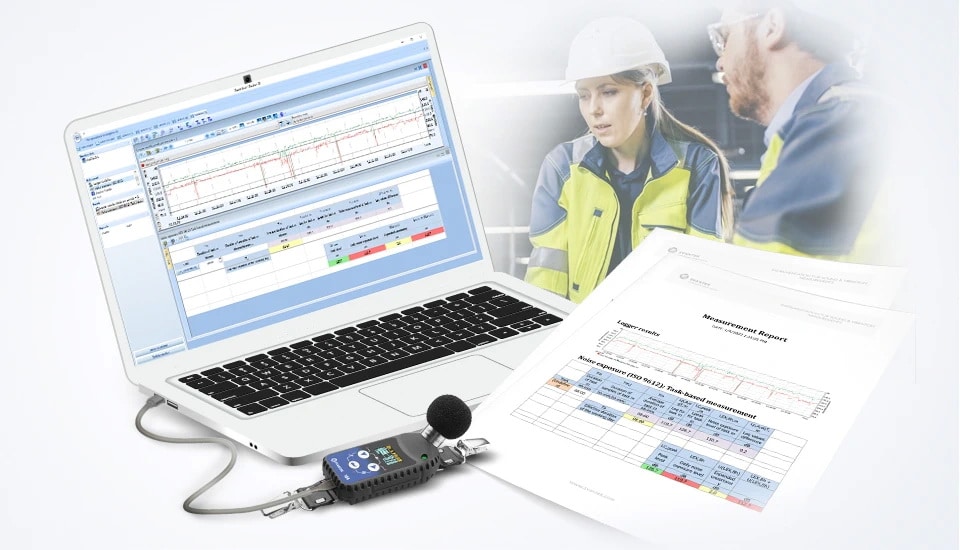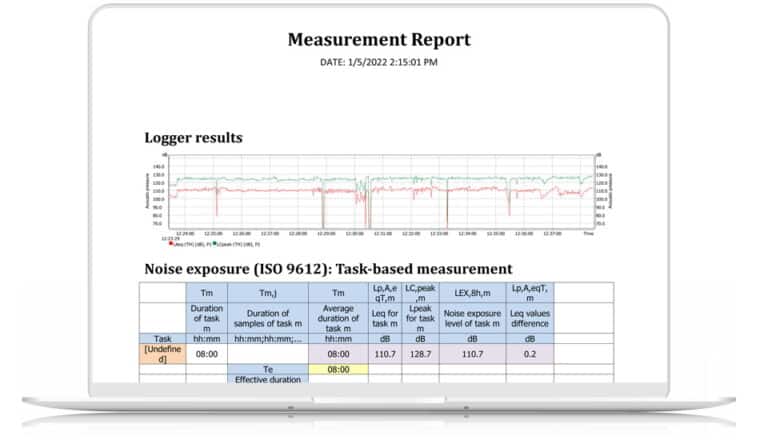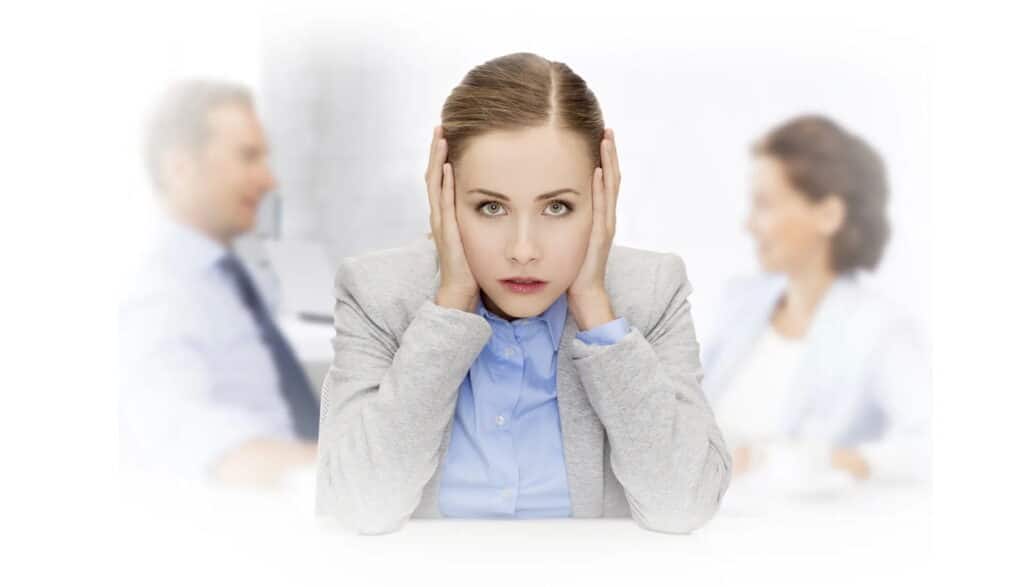Noise at Work
Noise at work can have adverse effects on employees’ health and productivity, and there are various regulations and measures in place to address and mitigate workplace noise.
Noise at work can have adverse effects on employees’ health and productivity, and there are various regulations and measures in place to address and mitigate workplace noise.
Noise at work is an undesired or disruptive sound within a professional setting that may adversely affect workers’ health and productivity. Such noise typically emanates from machinery, equipment, and daily operational activities. To protect employees, numerous global and national regulatory bodies have established standards for acceptable noise levels. Adherence to these standards requires employers to undertake actions such as conducting regular noise assessments, providing protective equipment, and offering training to ensure a safe auditory environment in the workplace.

Noisy work environments are settings where the sound levels can consistently reach or exceed levels that are potentially harmful or disruptive to workers. Such environments can range from manufacturing facilities to entertainment venues. Here are some common noisy work environments and related challenges:
Yes, noise is a workplace hazard. Prolonged exposure to high levels of noise in the workplace can lead to noise-induced hearing loss and other health-related issues. It can also contribute to stress, fatigue, and decreased productivity. Various authoritative entities, including the Occupational Safety and Health Administration (OSHA) in the U.S., the Health and Safety Executive (HSE) in the UK, and the European Union (EU) Directives, have established regulations concerning noise exposure in the workplace. These regulations are based on research and studies that highlight the detrimental effects of prolonged noise exposure. Additionally, international standards set by bodies like the International Organization for Standardization (ISO) further emphasize the global recognition of noise as a significant occupational hazard.
The effects of noise in the workplace can be diverse, impacting both the physical health and psychological well-being of workers. Here are the primary effects:
The acceptable noise level in the workplace varies based on the nature of the work and the standards set by various national and international regulatory bodies. However, a commonly referenced standard is set by the Occupational Safety and Health Administration (OSHA) in the U.S.:
In the context of specific workplace environments:
It’s essential to note that these are general guidelines and the exact acceptable levels might differ based on regional regulations, type of industry, and specific tasks. Regular noise assessments and the use of protective equipment become crucial, especially in environments with potential for high noise exposure.

Noise working hours typically refer to the periods during which noise from operations or activities is permitted without violating regulations or causing undue disturbances. Safe levels of noise at work, on the other hand, indicate the maximum decibel levels to which workers can be exposed without risking their hearing health.
In many urban areas and jurisdictions, there are regulations that restrict certain noisy activities to specified hours, especially if they might disturb the peace of residential neighborhoods. For example, construction activities might be limited to daytime hours. The specific hours and noise levels deemed acceptable often vary by locality, type of activity, and day of the week. Regulations often have exceptions for emergencies or essential work.
Noise exposure often symbolized as LEX, represents the average decibel level to which a worker is exposed over a specified work duration, typically 8 hours. This value is frequently communicated as a Noise Dose, signifying a percentage of the permissible daily limit. In the European Union, this standard measurement period is denoted as LEX,8h, where the “8h” emphasizes the standard 8-hour work reference time. In contrast, the United States utilizes the term TWA (Time-Weighted Average) for this 8-hour assessment, which derives from the LAV (Averaged SPL). Both approaches aim to quantify the average noise level over a worker’s typical workday to ensure safety standards are upheld.

OSHA 1910.95 defines noise exposure as a measure of the potential harm or risk to hearing that an employee faces due to the ambient noise in their workplace. This exposure is standardized to the TWA over an eight-hour shift to allow for consistent regulations and protections across various job roles and industries. The “8-Hour Time-Weighted Average Sound Level” (TWA) denotes the steady noise level an employee would be exposed to over an 8-hour period that would result in the same hearing hazard as the varying noise they were actually exposed to during that time frame. The TWA is expressed in decibels (dB), which is a logarithmic unit that quantifies the intensity of sound.
According to the OSHA 1910.95 the Noise Dose is a Percent Noise Exposure which represents an employee’s cumulative noise exposure over an 8-hour period as a percentage of allowable exposure. In essence, if an employee were exposed to a constant noise level over 8 hours, a dose of 100% would equate to the permissible exposure level set by the regulatory body. Doses above 100% indicate overexposure. Noise dose converts to a constant sound level (TWA) that represents the same level of risk over 8 hours, for example:
Noise regulations in the workplace are critical for ensuring employee safety and health. Local regulations in the US, EU, and UK set action values for daily or weekly noise exposure and peak sound pressure, triggering the need for risk assessments and the provision of hearing protection:
US – OSHA (Occupational Safety and Health Administration):
EU – European Union Directives: The EU has Directive 2003/10/EC which aims to define minimum requirements for the protection of workers from risks to their health and safety arising from exposure to noise, particularly the risk to hearing.
UK – Health and Safety Executive (HSE):

Safe noise levels at work are determined based on established guidelines and regulations aimed at preventing hearing loss and other health issues related to noise exposure. These guidelines specify the maximum permissible exposure limits to noise, often based on an 8-hour workday. Here are the general standards for safe noise levels:
Yes, it is quite loud. People may not be able to focus or communicate properly at this level of noise. A quiet workplace noise level is generally around 50 decibels.
A noise survey or noise at work survey is a method used to measure and assess the levels of noise exposure within a workplace. Its primary aim is to ensure that employees are not exposed to harmful levels of noise that might lead to hearing loss or other health issues. When undertaking a noise survey, it’s beneficial to engage experts in acoustics or occupational health to ensure accuracy, appropriate methodology, and effective control measure recommendations.

Conducting a noise survey involves a systematic approach to measure and assess the levels of noise exposure within a workplace. Properly executing a noise survey ensures that the results are accurate and that appropriate steps are taken based on the findings. Here’s a step-by-step guide:
For the best results, consider engaging with professionals specializing in acoustics or occupational health. They bring expertise in both the technical aspects of measurement and the interpretation of results.
The noise survey is carried out with a hand-held sound level meter such as the SV 973 class 2 sound level meter. It’s called “noise sweeping” and the aim is to determine noise levels more accurately than your mobile app. The next step is to perform noise monitoring with a noise dosimeter once the high levels of noise have been verified.
You’d wear a noise dosimeter on your shoulder, close to your ear, to assess what you hear. The procedure would last the full working day, generally three or five days in a row. After such monitoring, the data would be analyzed to check the real noise exposure you are experiencing.
The modern noise dosimeters such as SV 104 noise dosimeter are too smart to be fooled. They use the frequency analysis, movement detection, or even sound recording to determine if the noise is genuine and not caused by knocking the dosimeter.
The noise consultant will issue a report indicating the noise exposure and how it compares to noise restrictions after the measurements are completed and data analyzed. Consultants also offer advice on future actions. As a result, it’s back to the employer for further improvements!

Workplace noise assessment is crucial for understanding the potential risks to employees’ hearing and determining appropriate interventions. In an office setting, while noise levels might generally be lower than in industrial environments, distractions or intermittent loud noises can affect productivity and well-being.
Workplace Noise Assessment is done based on survey with a calibrated sound level meters or noise dosimeters to record noise levels over a specific period. The collected data helps in understanding both continuous and intermittent noise patterns. After gathering the data, the results are compared with established standards (like OSHA’s or a relevant local body’s) it’s important to involve professionals with expertise in acoustics or occupational health to ensure accurate readings and effective solutions. Regular assessments, especially after significant changes in the office layout, equipment, or staff size, will help maintain a conducive and healthy work environment.

Controlling workplace noise is essential for protecting workers’ hearing and ensuring a productive working environment. Here are several control measures to consider, ranging from engineering solutions to administrative strategies:
It’s essential to adopt a hierarchical approach when implementing control measures, prioritizing the elimination or reduction of noise at the source. If this isn’t feasible, the focus should shift to administrative controls and PPE to protect workers from harmful noise exposure.
